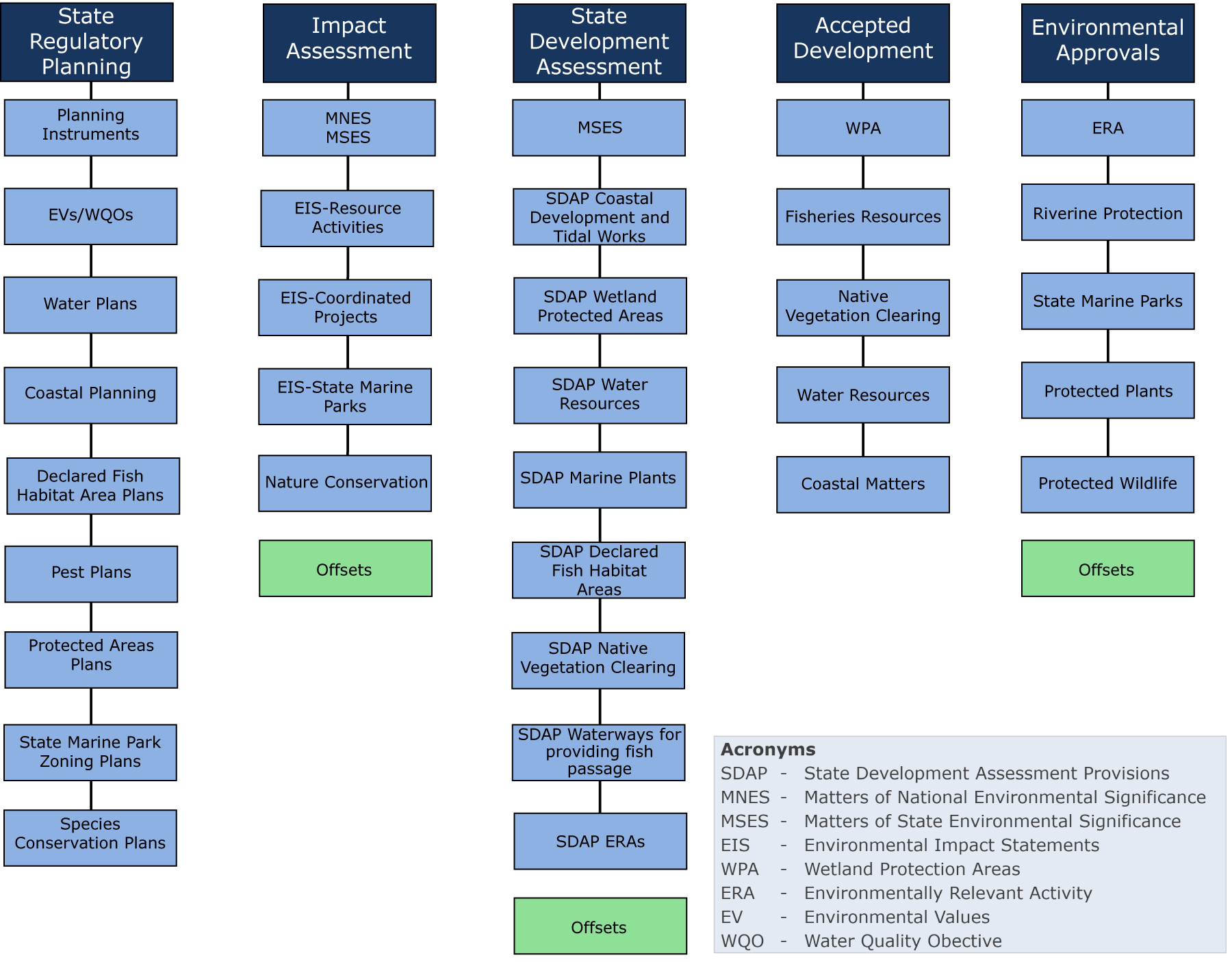|
|
Planning and approvalsIn Queensland, the protection of wetland environmental values is addressed in regulatory planning, assessment and approval mechanisms across the Commonwealth, State and Local Governments. Please note disclaimer at bottom of page. Additional informationQuick facts
The diagram below outlines key mechanisms that regulate wetland environmental values and biodiversity values. The mechanisms are grouped broadly according to whether they are planning, assessment or approvals related. Details on how these mechanisms address wetland values are provided through links to related information sources. Regulatory planning, assessment and approval mechanisms that contribute to protecting wetlands values
Other than development approvals under the Planning Act 2016, there are environmental approvals to protect and manage wetland and biodiversity values including authorities, accepted development requirements, permits and licenses required under other legislation. The consideration of wetland and biodiversity values may be addressed in different ways depending on the level of environmental risk and the regulatory mechanisms. Some regulatory mechanisms deal with specific environmental values (such as water quality and groundwater) while others may address whole wetland systems. Legislation in Queensland aims to improve clarity and simplify decision-making through consistent use of the wetland definition and, provision of comprehensive wetland mapping and management tools. The different mechanisms recognise different levels of environmental risk and implement legislation provisions accordingly. For example, the requirement to develop an environmental impact statement (EIS) for a large resource project involving public notification is an example of a mechanism that assesses environmental risk and potential impacts on wetland values. By contrast, a landholder wishing to undertake a routine activity that complies with a code of practice may not require an approval if the activity poses a low level of environmental risk. The Environmental Protection Act 1994 aims to protect Queensland’s environment while allowing for development that improves the total quality of life, both now and in the future, in a way that maintains the ecological processes on which life depends. It also defines environmental values and environmental harm and states the general environmental duty which requires that a person must not carry out any activity that causes, or is likely to cause, environmental harm unless the person takes all reasonable and practicable measures to prevent or minimise the harm. Consideration of ecologically sustainable development principles is established in environmental licensing and a number of other legislative frameworks. The State and local planning instruments establish the decision hierarchy to ‘avoid, mitigate and offset’ environmental impacts associated with development. The Queensland Government website explains the roles and responsibilities of the State and local governments in the planning and assessment system.
DisclaimerWhile every care is taken to ensure the accuracy of this product, the Queensland Government and Australian Government make no representations or warranties about its accuracy, reliability, completeness or suitability for any particular purpose and disclaim all responsibility and all liability (including without limitation, liability in negligence) for all expenses, losses, damages (including indirect or consequential damage) and costs which might be incurred as a consequence of reliance on the product, or as a result of the product being inaccurate or incomplete in any way and for any reason. Last updated: 6 June 2022 This page should be cited as: Department of Environment, Science and Innovation, Queensland (2022) Planning and approvals, WetlandInfo website, accessed 18 March 2024. Available at: https://wetlandinfo.des.qld.gov.au/wetlands/management/legislation-update/planning-and-approvals/ |

 — Department of Environment, Science and Innovation
— Department of Environment, Science and Innovation



